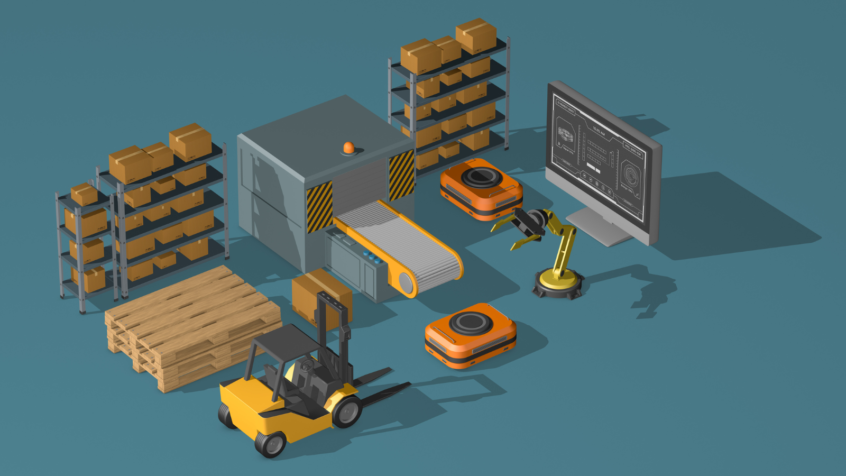In today’s world, sustainability has become a vital consideration for businesses in every industry. According to a recent Forbes article, “Why a Sustainable Supply Chain is Critical to the Future of Consumer Products,” consumers are increasingly looking for products that are sustainably sourced and produced. In fact, research shows that 90% of consumers would switch to a brand that is associated with a good cause. This means that businesses must prioritize sustainability in their supply chains if they want to remain competitive in the marketplace.
A good way to start having a green supply chain is using the resources that offer organizations that help companies to measure their impact in all the process of the economic activity, from the raw material to the delivery. Here is some of them offer measurement frameworks and instruments to identify sustainability risks and opportunities:
- Sustainability Accounting Standards Board (SASB): SASB provides industry-specific sustainability accounting standards to help companies identify, manage, and communicate financially material sustainability issues in their supply chains.
- Global Reporting Initiative (GRI): GRI provides sustainability reporting standards that companies can use to assess and communicate their sustainability performance, including supply chain issues.
- Carbon Trust: The Carbon Trust offers a range of sustainability tools and services to help businesses identify and reduce carbon emissions across their supply chains.
Once companies know where their supply chain issues are, they can set goals for reduce the environmental impact, and it is recommended that these goals are aligned with sustainable objectives, these are some examples of KPIS that leaders can set:
- Make the effort to minimize the waste, implement circular economy in the production process it’s essential, this means use materials and resources that will be totally approach in the result of the product. Other alternative is collaborated with companies of other sectors to transform the waste in something profitable.
- Explore possibilities for creating a system to income sources that involve the recycling and upcycling of materials.
- Move away from conventional product consumption models in favor of innovative business models that prioritize the repair and reuse before waste.
- Use logistics processes that optimize deliveries to reduce mileage, emissions, and carbon footprint.
- Operate assets and equipment in an energy-efficient manner that is safe for the environment and the workforce.
A good example of companies that has implemented successfully a sustainable model is Tesla, which is leading electric car sector with a revolutionized the automotive industry with its sustainable business model. Tesla’s electric vehicles are powered by renewable energy sources, and the company has also developed energy storage solutions for homes and businesses.
Also, the furniture company IKEA has implemented a range of sustainability initiatives, including using renewable energy sources in their stores and factories, reducing waste in their supply chain, and designing products for circularity.
The advent of digital technology has also enhanced the capacity of companies to provide support to numerous suppliers. For instance, Walmart introduced a program in 2014 that aimed to help thousands of its suppliers in China increase the energy efficiency of their factories by means of an online tool. As a result of the program, suppliers were able to reduce their energy consumption by an average of 10 percent. Similarly, Unilever uses a software tool, created in partnership with the University of Aberdeen, to gather information on whether farmers in its supply chain are adopting sustainable practices. Unilever makes the tool freely available to these farmers as part of its target to source all of its agricultural content from sustainable sources by 2020.
Here are some additional aspects of a sustainable supply chain:
- Collaborate with suppliers and partners. Businesses must work together with the suppliers to ensure that sustainability is prioritized. This can involve setting sustainability targets, implementing sustainable practices, and regularly monitoring and reporting progress.
- Optimize the inventory using artificial intelligence (AI), you can forecast demand to go through deeper insight that detects shortages, disruptions, and other challenges while allowing you to quickly simulate and evaluate different scenarios.
- Reduce energy consumption with renewable energy, in all the process involved: production, warehousing and sell.
- Contract a transportation method that optimizes delivery routes, avoiding unnecessary journeys and helping to reduce the carbon footprint.
It is crucial to transform aspirations for sustainability into practical steps that are integrated throughout the entire product lifecycle. In fact, more and more leaders recognize that sustainability cannot be relegated to a secondary consideration, but rather is an essential component of any viable business strategy. Several top consumer product companies have already developed sustainability plans, but it is now imperative for them to take concrete action to bring their plans to fruition.
If you are looking for options to deliver goods for your business, GLC could be your best ally for cargo transport and delivery. We specialize in optimizing the best routes for transportation, avoiding unnecessary journeys, and reducing the carbon footprint of your deliveries.

